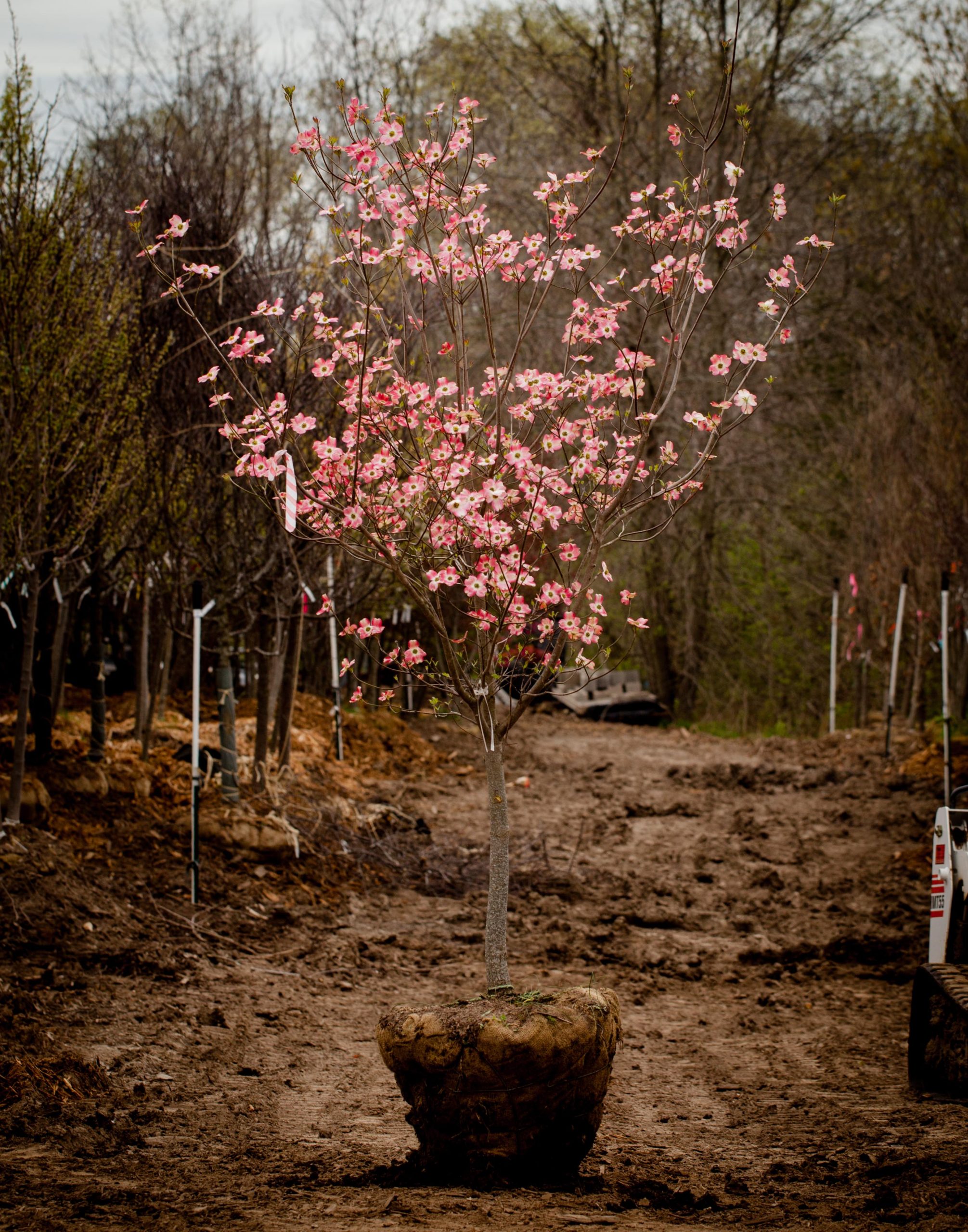We are often asked questions about various tree related issues. One common question that is asked is; should wire baskets be removed from trees at planting? We actually depend on wire baskets because they provide the best system of handling, planting, and establishing newly planted trees while keeping a high quality, tight root system. Wire baskets have been used in our company for over 30 years and we have planted tens of thousands of trees using wire baskets during this time. We believe that wire baskets are not detrimental to trees after planting and in fact, believe that recent studies have helped prove that trees planted in wire baskets are superior performers in the landscape. While we do draw upon years of experience, the following response to questions about wire baskets is also based on scientific evidence and recent research in whether or not leaving the wire baskets intact is detrimental to tree health.
First, we would like to address the function of a wire basket on field-grown trees. Wire baskets were designed to support the root ball on the top and sides. The top and side wire support the root ball during loading, shipping, and transplanting, insuring the root ball arrives at its planting arrives at its planting site, intact. They also provide support to the tree during the time it is establishing in the landscape. This support provided by the basket, along with the weight of the root ball, is the reason field-grown trees rarely need to be staked. When wire baskets are removed entirely, or the top tiers of wire are removed, the advantage of the weight of the root ball helping to hold the tree in the ground is lost. After removal of the wire, the trees will need to be staked and will be subject to blowing over during significant storm events. Not only does staking add significant cost to a tree planting project, it can also add liability with wires becoming tripping and mowing hazards. Also, we have seen staking materials not removed in a timely manner that eventually can girdle and destroy a tree. The wire basket also serves one other very important purpose; it provides a means for lifting the tree by the root ball so it is not lifted by strapping on the trunk. The basket is designed to support the tree by distributing the weight over the entire root ball.
A concern frequently expressed about wire baskets is how the basket may or may not interfere with the tree’s root system. It does not interfere at all. Picture a tree that has absorbed a wire fence or one who’s roots have pushed through concrete sidewalks. Research has shown that a root growing near the wire with eventually grow into the wire. It will initially be indented by the wire and then will grow around it completely. The root then grows new tissues on the other side of the wire and the vessels connect. Roots grow around basket wire, forming a complete union of bark and wood tissue; roots are not permanently girdled. There appears to be no injury to the roots. Basket wire remains intact in the soil for many years, and wire strength diminishes. Removing wire baskets at the time of planting is not necessary to assure growth and survival of large tree roots, however, you should remove any rope across the top of the ball and bend back or remove the basket loops eliminating the potential for girdling. The top horizontal wire should be at least several inches below the top of the soil ball. It is very important to leave the rope intact during establishment to gain all of the stability advantages a field grown tree can provide. It has been known that the improper removal of the wire can result in serious damage to the root system which outweighs any benefit received by removal of wire.

